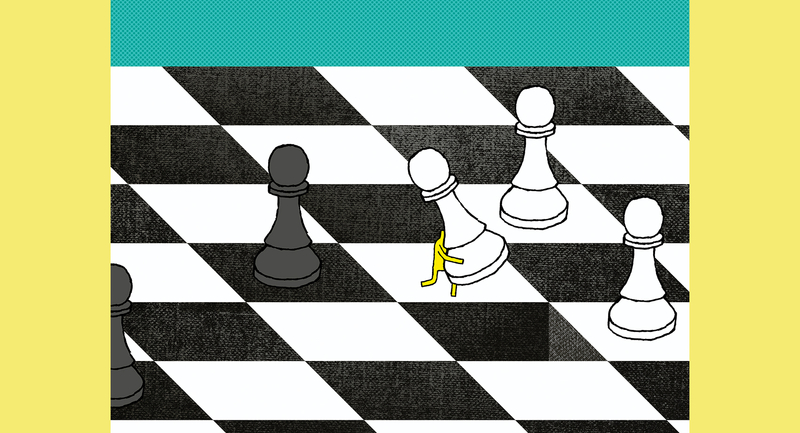Over the past few years, media coverage of the nation’s reading crisis—particularly the work of investigative journalist Emily Hanford—has shined a much-needed spotlight on shortcomings in reading instruction (Hanford, 2017). Hanford’s reporting pointed out that U.S. educators often believe they’re adequately teaching phonics when, in fact, they’re leaving many children unable to decode words fluently.
One significant reason for their struggles with decoding is that the widely used balanced literacy approach has teachers encourage children to guess at unfamiliar words, relying on pictures or context clues, rather than to focus on sounding them out. Given those options, many students take the path of least resistance and choose to guess. But when they encounter more complex text at higher grade levels, it becomes harder, if not impossible, to use guesswork to correctly decipher words. At that point, many students who appeared to be successful readers in earlier grades hit a wall.
But there’s another kind of wall many students will encounter at higher grade levels, even if they get excellent instruction in phonics and other foundational reading skills: They’ll find they can decode more complex text but can’t understand it. One recent study (Westall & Cummings, 2023) examined more than 40 states that have adopted a variety of policies focused on early reading, almost all aimed at improving phonics instruction. Researchers found that these policies did produce a bump in reading scores in grades 3–5. Yet, in all but a few cases, the improvement faded out after that.
Why Do Students Hit a Wall?
One reason these older students struggle with comprehension could be that reading passages at higher grade levels include more multisyllabic words, which are harder to decode. But a more fundamental reason is that the passages begin to use more sophisticated vocabulary and syntax. As a result, research indicates, understanding them increasingly reflects linguistic ability more than decoding ability (Catts, Adlof, & Ellis Weismer, 2006). This study’s findings suggest that if we want all students to become fully literate, we need to take a hard look at the standard approach to reading comprehension—the approach used not only by balanced literacy adherents, but also by many educators who teach foundational skills more systematically. Does the science of reading—defined to include all the evidence related to reading and not just evidence related to decoding—tell us that something is missing from that approach?
For decades, reading comprehension has been taught as a set of skills and strategies like “finding the main idea” of a text, or “determining the author’s purpose.” Teachers often model a skill of the week, choosing a book or text that appears to lend itself to teaching the skill. Then, students practice the skill using texts determined to be at their individual reading levels, which could be years below their grade level. The theory is that if students master a skill like “inferencing,” they’ll be able to apply it to any text on any topic—whether it’s a passage on a reading test or a high school textbook.
But cognitive scientists have known for decades that reading comprehension is far more complex than that, varying with the reader’s knowledge. One kind of comprehension-boosting knowledge is familiarity with the topic. An expert on baseball, for example, will find it easier to understand a passage describing a baseball game than someone unfamiliar with the sport.
A second kind of knowledge crucial to comprehension of complex texts is general knowledge of the world—especially more academic knowledge—and the vocabulary that goes with it. One study, for example, found a high correlation between reading comprehension ability and knowing facts like what pneumonia is or who Odysseus was, to cite two examples from the study (Willingham, 2012).
A third important type of knowledge for comprehension is familiarity with complex syntax, or sentence structure, since the syntax of written language is almost always more complex than that of spoken language. If students are unfamiliar with a grammatical concept like a subordinating conjunction, they may be stymied by a sentence using that structure, even if they’re fluent decoders and have adequate vocabularies.
Teaching vocabulary in the abstract doesn’t work; new words won’t stick unless encountered repeatedly in meaningful contexts.
Providing students with these more general kinds of knowledge—familiarity with sophisticated vocabulary and complex syntax—should be educators’ ultimate goal. Such knowledge enables readers to understand complex texts on topics they haven’t already learned about. But students can only acquire those general kinds of knowledge through learning about specific topics, ideally using complex texts. Teaching vocabulary in the abstract doesn’t work; new words won’t stick unless encountered repeatedly in meaningful contexts. And students won’t fully understand a word like medieval unless they’re also acquiring knowledge about history.
All this suggests what has been missing from the standard approach to comprehension: deep dives into meaty topics, with comprehension skills and strategies brought in as appropriate to help students understand texts rather than taught as ends in themselves. If instruction jumps from one random topic to another because the focus is on comprehension skills, students never get enough exposure to any one topic to enable them to absorb much knowledge. And if they’re limited to practicing skills at their individual reading levels—based on what they can read independently—they’re unlikely to encounter and become familiar with the vocabulary and syntax that will help them understand more complex texts.
Without Background Knowledge, Strategies Falter
Ample evidence shows that comprehension-strategy instruction works—but that doesn’t mean strategy instruction alone is enough. Decades ago, studies conducted by reading researchers demonstrated the importance of knowledge to comprehension, as Hugh Catts (2021–2022) has noted. Knowledge, they found, helps readers supply information that authors inevitably leave out—in other words, it helps readers make inferences; take in, analyze, and retain new information; and make predictions. Having knowledge about a topic also increases motivation to read about it.
Although researchers have focused on comprehension-strategy instruction in recent years, the earlier studies on knowledge are still valid. As one prominent advocate for strategy instruction, Timothy Shanahan (2023), has noted, strategies only work if a reader has an adequate amount of relevant knowledge.
And studies of comprehension strategies don’t provide support for the kind of comprehension instruction routinely provided in American classrooms. Those studies typically span only about six weeks, but schools try to teach skills and strategies year after year; there’s no evidence that students benefit from that much strategy instruction. Moreover, there’s little or no evidence to support instruction in most of the comprehension skills teachers focus on, like “comparing and contrasting” or “determining author’s purpose” (Shanahan, 2022).
Building Solid Comprehension
In other words, schools can do far more to build the kind of knowledge that fuels comprehension than they are currently doing. Here are two key steps toward that end.
1. Break Down Silos!
The first step is to break down the silos between reading instruction and subjects like social studies and science. To be sure, foundational skills instruction should be done in a targeted manner in the early grades. If students at higher grade levels lack decoding skills, they should also get instruction in that area. But we need to jettison the idea that comprehension is something that can be taught—or accurately measured—in the abstract, without regard to content.
Schools can bring topics from subjects like social studies and science into the “reading block,” or they can bring literacy instruction—including writing—into the content areas. Ideally, they will do both. When content-area instruction is combined with literacy instruction, there are benefits to reading comprehension as well as to retention of information and vocabulary relating to the topics covered (Hwang, Cabell, & Joyner, 2021).
It’s important to begin building knowledge and vocabulary early—in kindergarten, if possible. The longer you wait, the larger the gaps in knowledge are likely to grow. One such gap is between “good” and “poor” readers. Young readers who have both good decoding skills and more sophisticated knowledge and vocabulary will, in the widely used leveled reading system, be allowed to read more complex text. Their knowledge not only helps them understand that text, it also helps them retain new information and vocabulary from it. Knowledge, as Marilyn Jager Adams (2015) has said, is like mental Velcro: it sticks best to other related knowledge.
The new knowledge these children acquire enables them to read even more complex texts. Meanwhile, readers who start with less knowledge are limited to less complex texts. They’re also in a worse position to retain new information from the texts because they lack the requisite “Velcro.”
The gap between these two groups widens every year, and as time passes it can become almost impossible to narrow. It’s been estimated that by the time students get to high school, the gap in literacy skills between those from the highest and lowest levels of family income is equivalent to five years of learning (Reardon, Valentino, & Shores, 2012). Income isn’t the only relevant factor; in our society, families with higher incomes also tend to have higher levels of education. And more highly educated parents are often in a better position to impart knowledge and vocabulary relevant to academic content to their children.
A related gap also becomes painfully evident at higher grade levels: the gap between what the curriculum assumes students know and what many actually do know. A fundamental reason for this gap is that the time allocated for reading and math in elementary and sometimes middle school is far greater than that allotted for social studies and science—especially in schools with low test scores (David, 2011). Many students arrive in high school without ever having had systematic instruction in subjects like history and geography. Teachers have told me that, especially in high-poverty communities, it’s not uncommon for high school students to be unaware of things like the difference between a city and a state or to be unable to find their hometown on a map of the United States.
2. Use Literacy Curricula that Build Knowledge
If we begin building knowledge in the early elementary grades, we can give all students the necessary foundation to understand what they’ll be expected to read in middle and high school. And while it’s theoretically possible to simply allocate more time to knowledge-building subjects like history and science in lower grades, the constraints of the elementary school schedule make it more feasible to bring topics from those areas into the reading block.
An effective knowledge-building curriculum will give all students access to complex texts, regardless of their decoding ability.
Several elementary literacy curricula are now available that build knowledge, each covering different bodies of knowledge in different ways. However, they all have a few crucial features in common. First, they’re organized by topic rather than skill, and they spend at least two or three weeks going fairly deeply into each topic. That allows for the repetition that enables concepts and vocabulary to lodge in learners’ long-term memory.
An effective knowledge-building curriculum will also give all students access to complex texts, regardless of their decoding ability. At lower grade levels, that access comes primarily through listening to teacher read-alouds and engaging in discussion. At higher grade levels, that approach can still be the most efficient way to build knowledge of a new topic, especially if students are not yet fluent readers. Once they’ve acquired background knowledge through read-alouds and discussion, they’re likely to be able to read about the topic at a higher level, assuming they have the necessary foundational skills.
That means that an effective literacy curriculum will have students listen to and discuss a text on a particular topic—for example, sea mammals—and then read about that topic themselves. Contrast that scenario with a common current approach, which might have students listen to a text on sea mammals, focus their discussion on a skill like “determining author’s purpose,” and then read a text on an unrelated topic—which they may know nothing about—to practice the skill. This approach makes the difficult task of reading harder than it needs to be.
The knowledge-building curricula that I’m familiar with, such as Core Knowledge Language Arts (CKLA), also incorporate reading comprehension skills and strategies. When appropriate to a particular topic or text, they ask students to do things like make inferences, compare and contrast, and activate prior knowledge. And—as many teachers have told me, and as I’ve seen for myself—students are better able to respond to those questions when the curriculum has provided them with the knowledge that equips them to do so.
There’s one more important feature of a good literacy curriculum—or a good social studies or science curriculum: writing. Many schools have siloed off writing from content-area instruction—and from reading—having students write about their personal experiences or opinions, or on topics covered superficially in a separate writing curriculum. Research indicates that when students write about the content of the curriculum—in any subject, at any grade level—it boosts their learning (Graham, Kiuhara, & MacKay, 2020). So why not have them write about the content they’re studying in subjects like history and science as well as literature? Writing—when taught explicitly, beginning at the sentence level—also familiarizes students with the complex syntax of written language. When students learn how to use something like a subordinating conjunction, they’re in a much better position to understand that structure when they encounter it in their reading.
Make the Change
Although this kind of change in how we prepare students to comprehend texts won’t always be easy, many educators who have adopted a knowledge-building approach to literacy are seeing dramatic results in their classrooms. For instance, Erica Rains, an instructional coach in Temple, Texas, told me her school is seeing “huge growth” with their bilingual students, including in students’ vocabulary and their writing. Melanie Beaver, an administrator in South Vermilion, Indiana, told me that because their students are now listening to and discussing texts they can’t yet read on their own, “their conversations are deeper [and] they’re reasoning differently.” And although it may not yet be apparent, young readers like these will be better equipped to succeed at higher grade levels—and beyond.
Editor's Note: This article is a slightly revised version of what appears in the December 2023/January 2024 print issue.
Reflect & Discuss
➛ Do you agree with Wexler that reading comprehension instruction needs to be more closely brought together with “deep dives into topics”?
➛ Why do you think building background knowledge has tended, as Wexler argues, to be less integral to literacy instruction than other strategies? Are reading and writing instruction integrated into your school curriculum? Or are they siloed as Wexler warns against?









